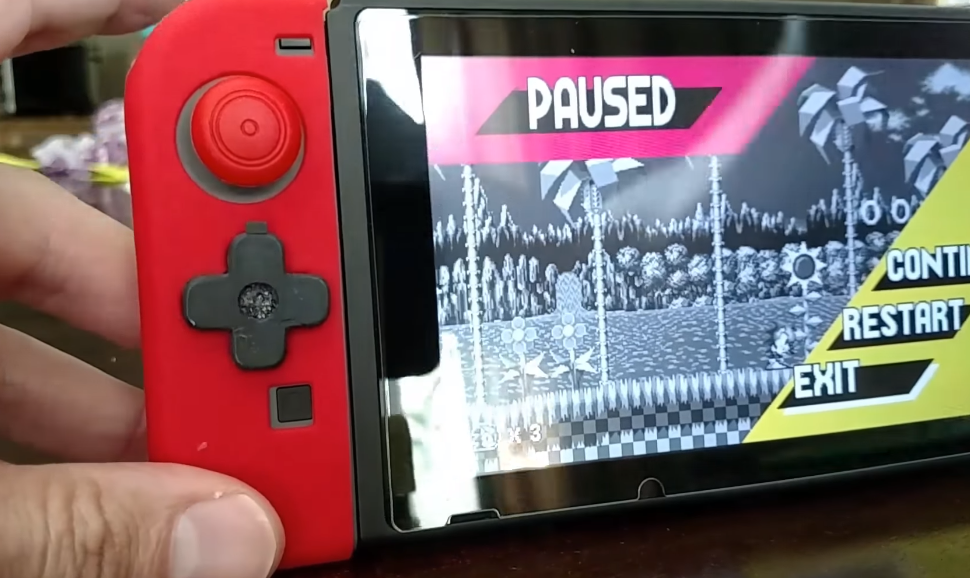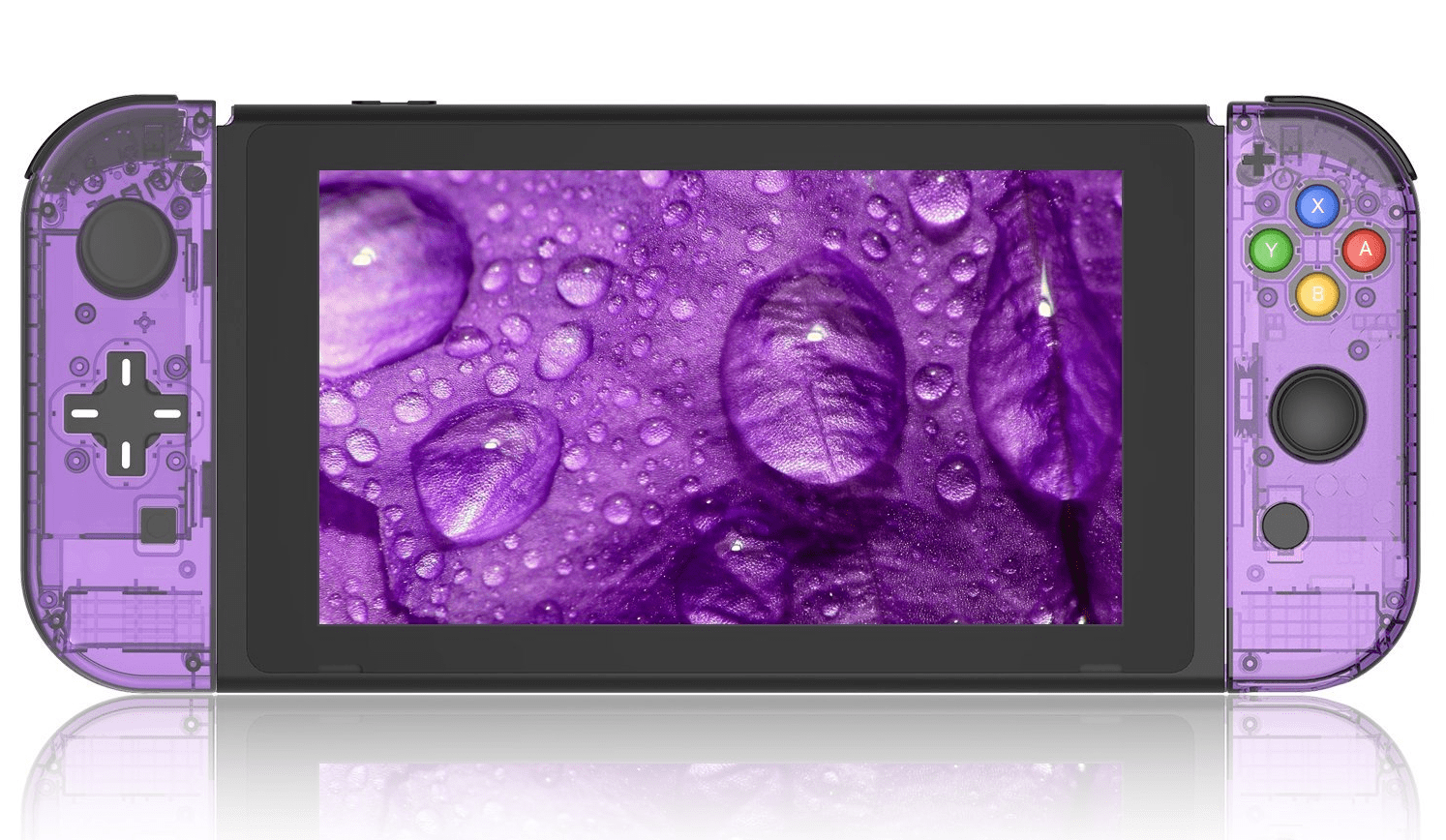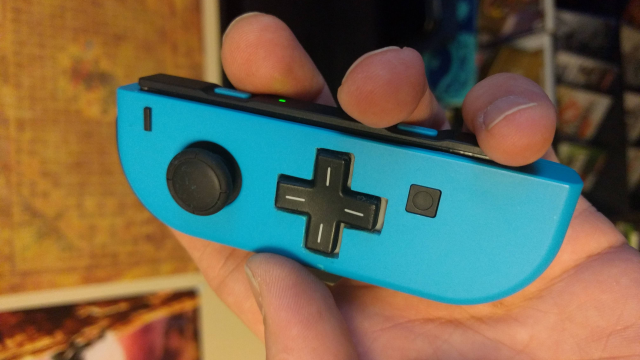Image credit: Persian Assassin
Nintendo launched the Switch on March 3 of this year. The system was surprisingly well received. The Legend of Zelda: Breath of the Wild was amazing, plus it was portable, and the Switch has been gaining momentum ever since. There’s just one problem: it doesn’t have a d-pad.
The Switch is the first Nintendo console that shipped without one. Sure it had the Pro Controller, the company’s best approximation of the current standard set by Microsoft, but that was not the Switch’s default. What came in the box was a tablet and two Joy-Con, neither of which had a d-pad. Instead, both had a diamond configuration of small face buttons. A, B, Y, X on the right one and up, down, left, right on the other.
This oversight certainly didn’t hold the console back in any meaningful way, but it’s something players have still been clamoring about. Almost since the Switch released, people have been attempting to fill the void left by the traditional d-pad’s absence by adding clunky 3D printed replacements. These began with pieces that went over the original buttons and closely approximated the inputs one would expect from manipulating a normal set of directional arrows.
They worked well enough that you could pull off a quarter-circle Hadouken in Ultra Street Fighter II without too much trouble, but they still weren’t an optimised solution. There’s a level of friction and tangible resistance to rolling your thumb across a d-pad that analogue sticks simply can’t replace. Especially for those of us who grew up with the NES and SNES, there will always be something superior about the feel of opposable flesh against flexible but durable plastic.

Image credit: An Enginerd
More recently, a company called Basstop has started shipping Joy-Con cases with built-in d-pads. Since the cross-shaped plastic is embedded in the rest of the shell instead of put over top as had been the case with a lot of 3D printed ones, this newer option is a step forward for everyone dreaming of the day when the Switch controllers will have all the functionality of an original NES game pad.
You might remember Basstop as the makers of a special Switch dock that’s small and portable (and doesn’t hide the screen).
It required some setup and added technological know-how, but overall people have been satisfied with it. While some people have experienced problems with Basstop shells (incomplete fits that lead to creaking noises), it’s something people desperate for a d-pad might be willing to overlook in the short term.
Of course, the easiest solution would just be for Nintendo to release a new set of Joy-Con with the d-pad built in. Being the most familiar with how their own technology works and having no incentive to cut corners and put out a poor quality product, any solution provided by them would likely be the best.
It would also make it so people didn’t have to take matters into their own hands and go to dramatic lengths like one passionate fan did when they fused a d-pad from an Xbox controller over top of the buttons on the left Joy-Con.

Basstop’s replacement Switch shell with built-in d-pad.
Especially since almost every system prior to the Switch had one. Even the Virtual Boy had a designated d-pad, despite every other problem with that piece of hardware. The only one that didn’t was the original Game & Watch, the company’s first tiny handheld that had more in common with a scientific calculator than a modern gaming console.
There are of course other options. As I mentioned above, there’s always the Pro Controller which has a great shape and weight and feels excellent overall.
But while it’s great for playing Switch games in docked mode on your TV, it’s not practical for gaming on the go. Neither is Hori’s Pro Pad X, a Pokken Tournament DX branded controller that’s great for fighting games but also not ideal for portable gaming.
What is clear, however, is that in the absence of any action from Nintendo, third-party companies and other players will try to fill the void. The Switch is an impressively moddable console, which has in turn led to all sorts of interesting and sharp looking customise iterations of the hardware. Everything from changing the colours of the buttons to replacing entire shells or spray-painting on logos and fan art.
And until Nintendo introduces more design options of its own, like Microsoft did for the Design Lab for the Xbox One controller, or make a first-party Joy-Con with a d-pad available, the energetic DIY community around the console is going to continue to try and pick up the slack themselves.

Comments
6 responses to “Just Because Nintendo Didn’t Give The Switch A D-Pad Doesn’t Mean Others Aren’t Trying”
obviously, no d-pad because it needs to be four buttons for a second player when split and turned sideways, and in this day and age…..D-Pads are hardly used anyway so the trade off for the switch losing it was worth it.
I’d counter that for a lot of people, the sideways joycon would be used even more infrequently than the d-pad. For me a bigger problem is that not only did we lose the Wii U style stick placement on the right side, but the positioning now to make it usable when sideways makes it practically useless for normal play. The damn stick is just in the way of the buttons all the time.
D-Pads are still pretty widely used as the preferred movement input for 2D platformers, which are a non-insignificant part of the market. For stuff like Hollow Knight and Shovel Knight, having no D-Pad is a major PITA, and I remember that being a point of contention when Spectre of Torment launched on the Switch.
For a lot of people, a D-Pad is going to be used radically more than the breakaway second player controller, so not having the option is worth grumbling about. At the very least, it’d be good if Nintendo sold replacement Joy-Con pairs that replaced the left controller buttons with a D-Pad.
Hollow Knight and Shovel Knight both have jump assigned to a button independent of the d-pad. That’s a standard convention for contemporary platformers. If d-pad usage is restricted to cardinal directions, which are already covered by the buttons of the left joy-con, and there is no requirement to roll between them, then why are d-pads a necessity for this example?
I get the issue with some fighting games but am completely lost when the vast majority of other genres use d-pads for 4-point navigation, such as in menus.
Simply switching between left and right to change direction 2d platformers doesn’t feel nearly as nice on the 4-button setup, compared to a d-pad. Also, even if they have a committed button for jumping, a lot of them require rolling from left/right to down for the purpose of a midair directional attack, which is a mechanic used extensively by both Shovel Knight and Hollow Knight. Same problem that using up for jump has, but it uses down instead of up and can’t easily be given its own dedicated button.
literally haven’t bought any of the great old-school 2D fighters on my Switch because I know it would be a nightmare using the “button” dpad.
Literally forces you to play docked with a pro controller.
Which is ok for many people ofc.
Funny.. I didn’t notice it was missing until this article.